Types of Hermit Crabs: 7 Wonderful Species You Need to Check Out!
Different types of hermit crabs differ in their unique characteristics. So whether you’re looking for a hermit crab for educational purposes or for fun, you’re sure to find the perfect one on this list!
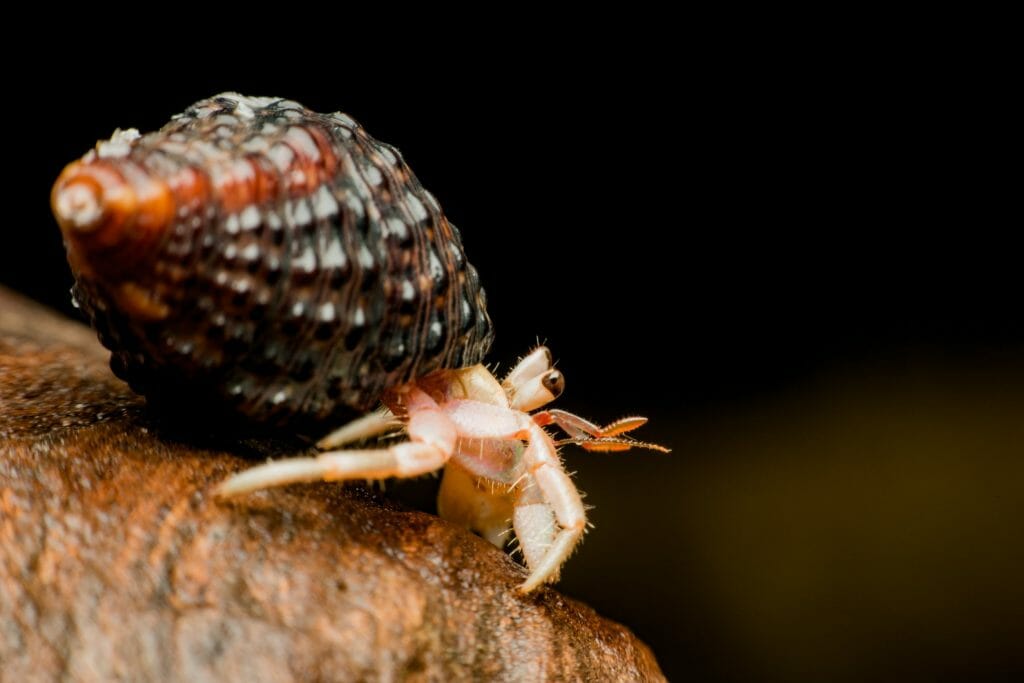
Choosing the right hermit crab can be a daunting task. But don’t worry, we’re here to help. After you’ve determined which type of hermit crab is best for you, research which species and colors are available in your area. From there, it’s just a matter of picking up your new friend and getting started! You will have a great crab to keep you company, and you’ll also have made a friend for life!
Table of Contents
Best Types of Hermit Crabs
Caribbean Hermit Crab (Coenobita clypeatus)
Caribbean hermit crabs are friendly crustaceans that you can keep in various small and large tanks and will thrive. Feed them frozen or live foods regularly, and watch as their numbers increase over time! Caribbean hermit crabs are one of the most accessible types to care for, and they make a great addition to any reef tank.
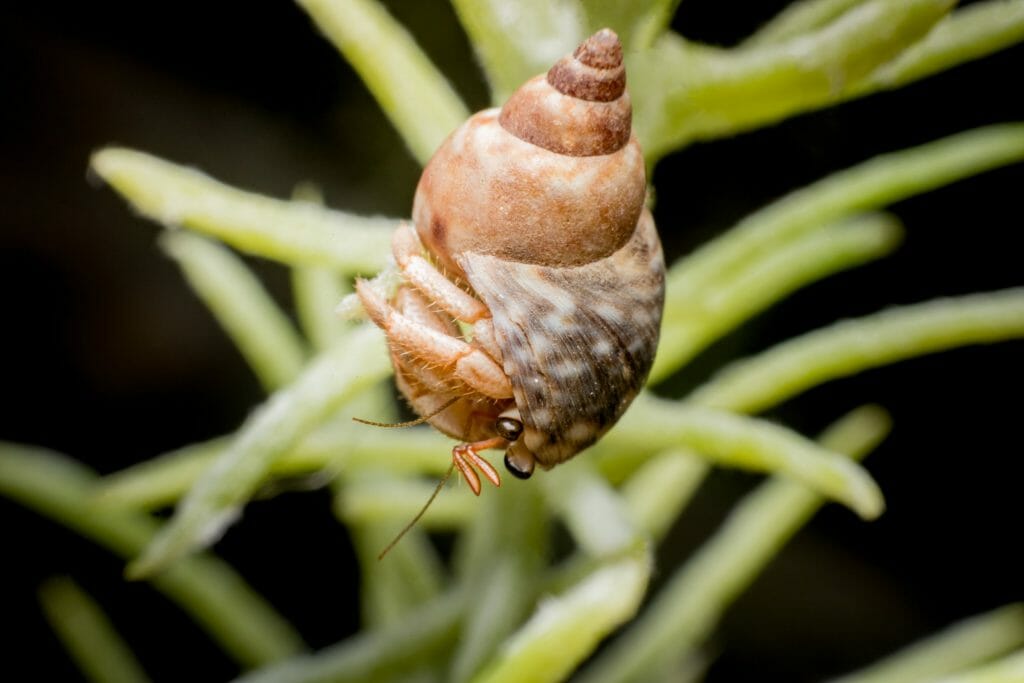
Coenobita clypeatus is a common type of hermit crab, abundant in tropical and subtropical regions. This crab is known for its protective shell and granular eyestalks. These crabs eat small invertebrates, an essential part of the marine ecosystem. In addition, these crabs are not aggressive and can be kept in the same tank as most other creatures.
Ecuadorian Hermit Crab (Coenobita compressus)
Coenobita compressus is a small crab that is often kept as a pet but requires special care since it does not carry any eggs and cannot protect its young externally like most crabs. They can grow up to 12 mm in length.
Additionally, these crabs are scavengers and eat detritus, so they’re not opposed to fouling up your tank if you don’t feed them correctly. This crab is known for its spiral shell, granular eyestalks, and bright red legs.
Strawberry Hermit Crab (Coenobita perlatus)
Strawberry hermit crabs can grow up to 80mm in length. They need only live or frozen food, so you’ll be able to provide all of the crab’s needs from the comfort of your home.
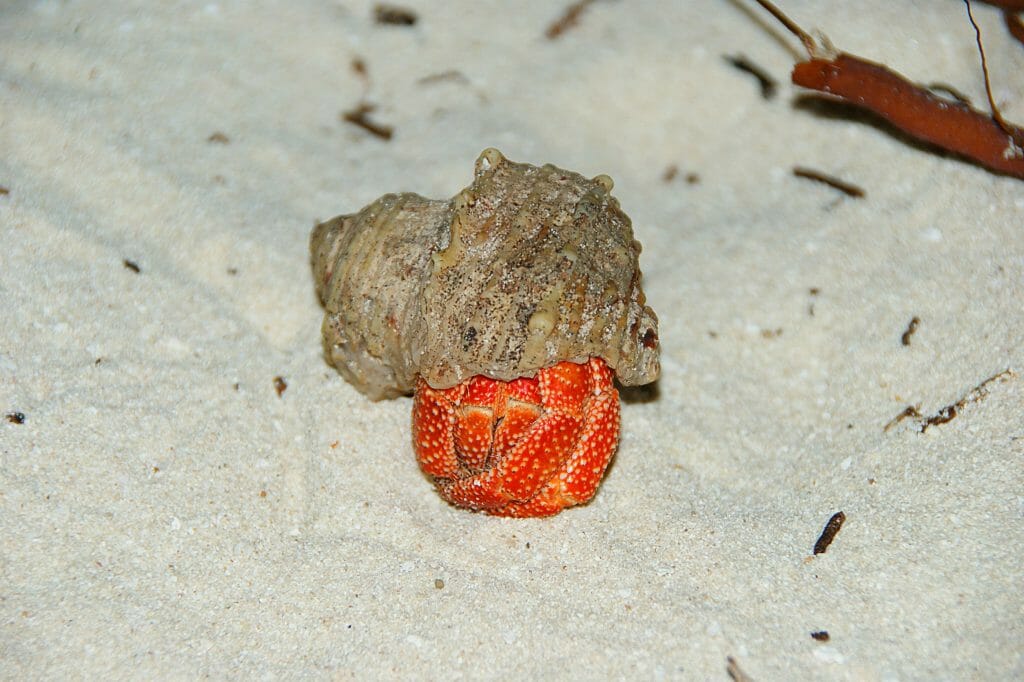
In addition, these crabs are pretty friendly and will enjoy being held or played with. So if you’re looking for a hermit crab that is unique and captivating, then the strawberry hermit crab may be just what you’re searching for!
Coenobita perlatus are scavengers masters of adaptation. They are known to eat primarily crustaceans, but they will also eat small amounts of plant material. Plus, they are the only hermit crab that has two forward-pointing eyes. This means they can see clearly in both dark and light environments.
Passionfruit Hermit Crab (Coenobita cavipes)
The passionfruit hermit crab is a small, brightly-colored crab that can grow up to 16 mm in length. They only require frozen food and live prey items, so you won’t have to worry about providing all of their needs. As far as care goes, you’ll need to keep a close eye on them since they are very active and may escape if given the opportunity.
Coenobita cavipes can be kept in overcrowded colonies of around 20 crabs each. They also like a damp environment, so provide them with wet rocks or live plants. Moreover, these crabs are omnivores and will eat small invertebrates, algae, and even other hermit crabs.
Land Hermit Crab (Coenobita rugosus)
Coenobita rugosus can grow up to 15 mm in length and has a reddish-orange shell. These crabs are also friendly and enjoy being held or played with by children. If you’re looking for a hermit crab of a specific size, Coenobita rugosus is definitely worth considering.
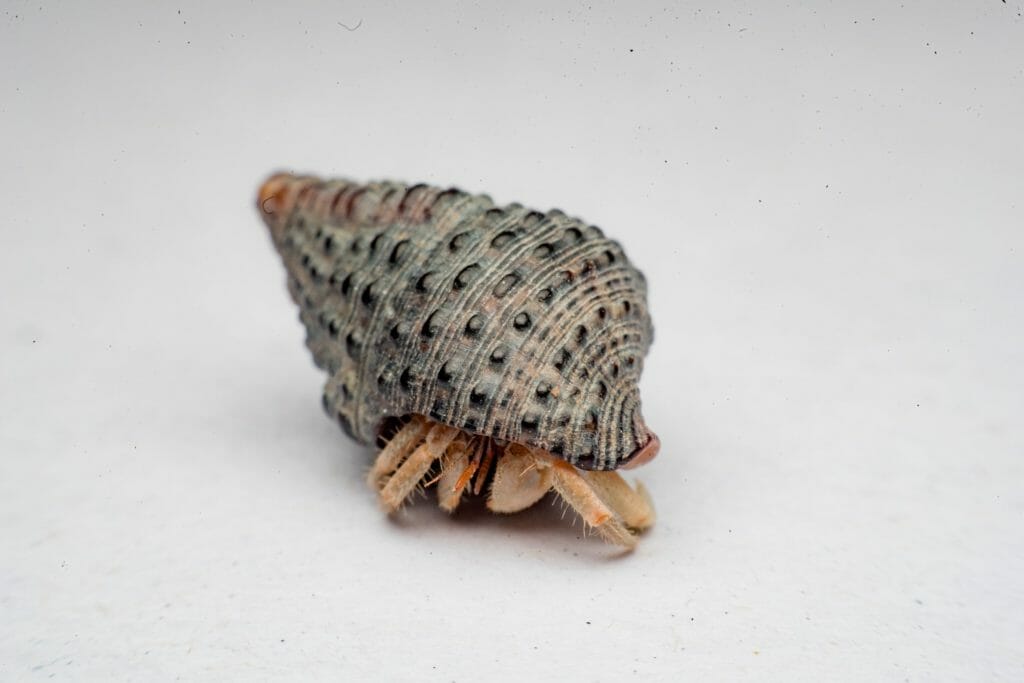
The land mating hermit crab can be pretty aggressive, so make sure you have a tank they will feel safe in before adding them to your collection! These crabs only need live prey items, so if you’re looking for an all-inclusive pet, this may be the perfect option.
Purple Hermit Crab (Coenobita brevimanus)
Coenobita brevimanus is one of the most popular varieties and can be 6-8 inches in size! These crabs live in coastal areas and are perfect for people who love a bit of salt in their lives. Curiously enough, most of their diet comes from harvesting bird droppings.
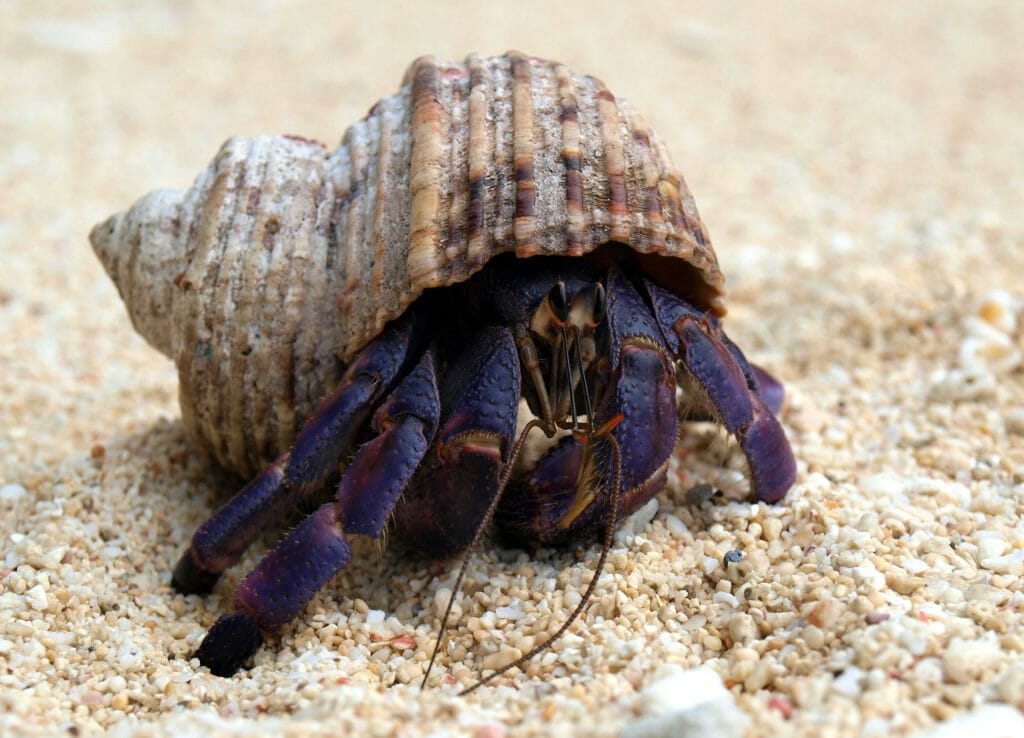
So if you’re looking for an environmentally responsible crab that won’t mess up your tank, then the Coenobita brevimanus may be a perfect choice!
Australian Land Hermit Crab (Coenobita variabilis)
Australian land hermit crabs are one of the most common types of a hermit crab. These are usually light brown to pale brown and can grow up to 13 cm in size! They make great additions to a saltwater or marine tank because they like to live in close quarters with other creatures. They’re easy to care for; they don’t need water often and eat soft food.
These crabs are very active and love to explore their surroundings. They can become relatively tame if provided with plenty of food and access to a safe location. Australian land hermit crabs make great pets for people who want something different than the typical hermit crab but still want one of these friendly critters in their life!